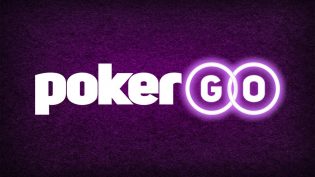
Hot off the heels of its announcement that it has acquired the global television and digital media rights to the World Series of Poker (WSOP), Poker Central has revealed that it is launching a subscription streaming video on demand (SVOD) service called PokerGO. PokerGO will cost subscribers $10 per month or $99 for an entire year in advance.
In last week’s announcement, Poker Central explained that ESPN would broadcast the WSOP Main Event “semi-live,” totaling about 40 hours of live coverage. This includes the WSOP Main Event final table, which will be played in July, thus ending the decade-long November Nine.
“Any coverage not aired by ESPN will be streamed exclusively through Poker Central’s digital distribution channels,” the press release said.
How that would work was a mystery, but not anymore. PokerGO will be that distribution channel for those who desire to watch more live World Series of Poker coverage this summer than what is shown on the ESPN family of networks. In addition to the Main Event, PokerGO will stream coverage of the $111,111 High Roller for One Drop and “more than a dozen” additional WSOP bracelet events.
The first event on PokerGO will be Poker Central’s Super High Roller Bowl, which begins May 28th.
All live PokerGO events will be produced by Poker PROductions, the company that has produced the World Series of Poker broadcasts for ESPN, “Poker After Dark,” “High Stakes Poker,” and the Super High Roller Bowl. More events plus live cash games will be broadcast on PokerGO as the year goes on.
PokerGo offers some “classic” poker television shows that are no longer on the air as part of its streaming on demand lineup. These shows include “Poker After Dark,” “Face the Ace,” and “Doubles Poker Championship.”
Original programming, aside from poker games, include “Inside Poker” and a new multi-part documentary on Matt Berkey’s preparation and journey to the 2016 Super High Roller Bowl final table called “Dead Money.”
“PokerGO offers the best live and on-demand poker tournaments and content for the fiercely passionate poker fan and the casual enthusiast alike – whenever and wherever you want them,” said Poker Central’s chief digital officer JR McCabe in a press release. “By pairing PokerGO with our existing television partnerships, we will offer unique and original programming to the largest potential global audience.”
Of course, the pressing question now is whether or not people will sign up for PokerGO. When Poker Central first launched, it billed itself as the only 24/7 poker television network. The problem was, it wasn’t on TV anywhere but one or two small, regional cable providers. The vast majority of people in the United States who wanted to watch Poker Central had to stream it online, either on a computer or a streaming box like Roku.
Poker Central has since foregone the broadcast television route and has gone solely online streaming. Certainly, SVOD services like Netflix and Hulu have been successful, but they offer movies and television programs that appeal to general audiences. Poker television is as a niche as niche can get. Will poker fans, who comprise a small segment of the population, want to watch poker programming so much that they will open their wallets for it?


















